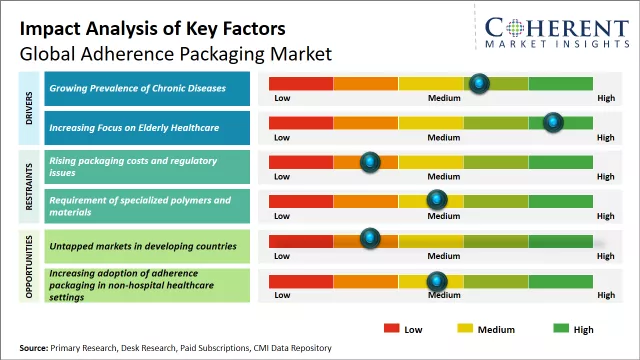Global adherence packaging market is estimated to be valued at USD 1.12 Bn in 2025 and is expected to reach USD 1.81 Bn by 2032, exhibiting a compound annual growth rate (CAGR) of 7.1 from 2025 to 2032.

To learn more about this report, Request sample copy
Growing geriatric population, increasing prevalence of chronic diseases, and rising need for enhanced medication administration are some of the key factors that are expected to drive the growth of the global adherence packaging market. Adherence packaging aids patients suffering from chronic diseases in properly following medical schedules and instructions. It plays a crucial role in improving patient outcomes by enhancing medication adherence. The demand for user-friendly packaging solutions that make healthcare more accessible is increasing among both patients and healthcare providers globally. This is expected to present lucrative opportunities for adherence packaging manufacturers in the near future.
Growing Prevalence of Chronic Diseases
The growing prevalence of chronic diseases across the globe is significantly driving the growth of the global adherence packaging market. As per the World Health Organization (WHO), chronic diseases such as cardiovascular diseases, cancer, respiratory diseases and diabetes are estimated to account for over 70% of all deaths globally. Most chronic diseases require patients to follow complicated prescription drug regimens involving multiple medications, some of which need to be taken several times a day. Poor medication adherence is quite common among chronically ill patients and it has been reported that nearly half of patients fail to take medications as prescribed by their healthcare providers. This often leads to disease complications, increased healthcare costs and poor patient outcomes. This is where adherence packaging plays a crucial role. By packaging medications in dose-wise sachets or blister packs for individual days of the week, adherence packaging helps simplify complicated treatment schedules for patients. This format helps patients easily identify the correct medications at the right time, thereby improving medication adherence. It also allows family members and caregivers to keep a check on whether prescriptions are being properly followed. The individual packaging approach helps pharmacies dispense multi-drug regimens in an organized manner. According to the National Association of State Mental Health Program Directors (NASMHPD), adherence packaging led to 50-70% reduction in medication administration errors in long-term care facilities for people with mental illness.
Joining thousands of companies around the world committed to making the Excellent Business Solutions.
View All Our Clients